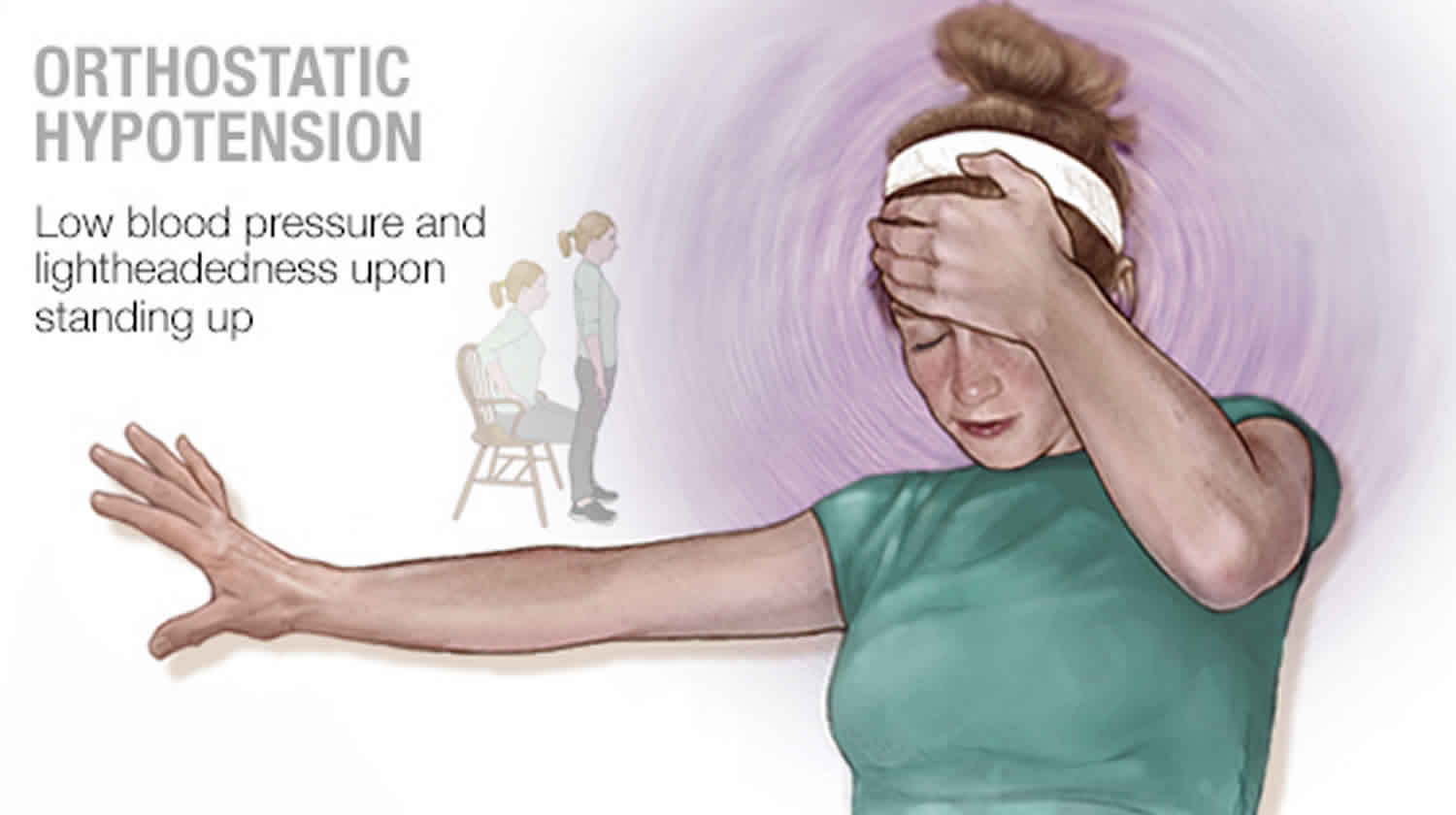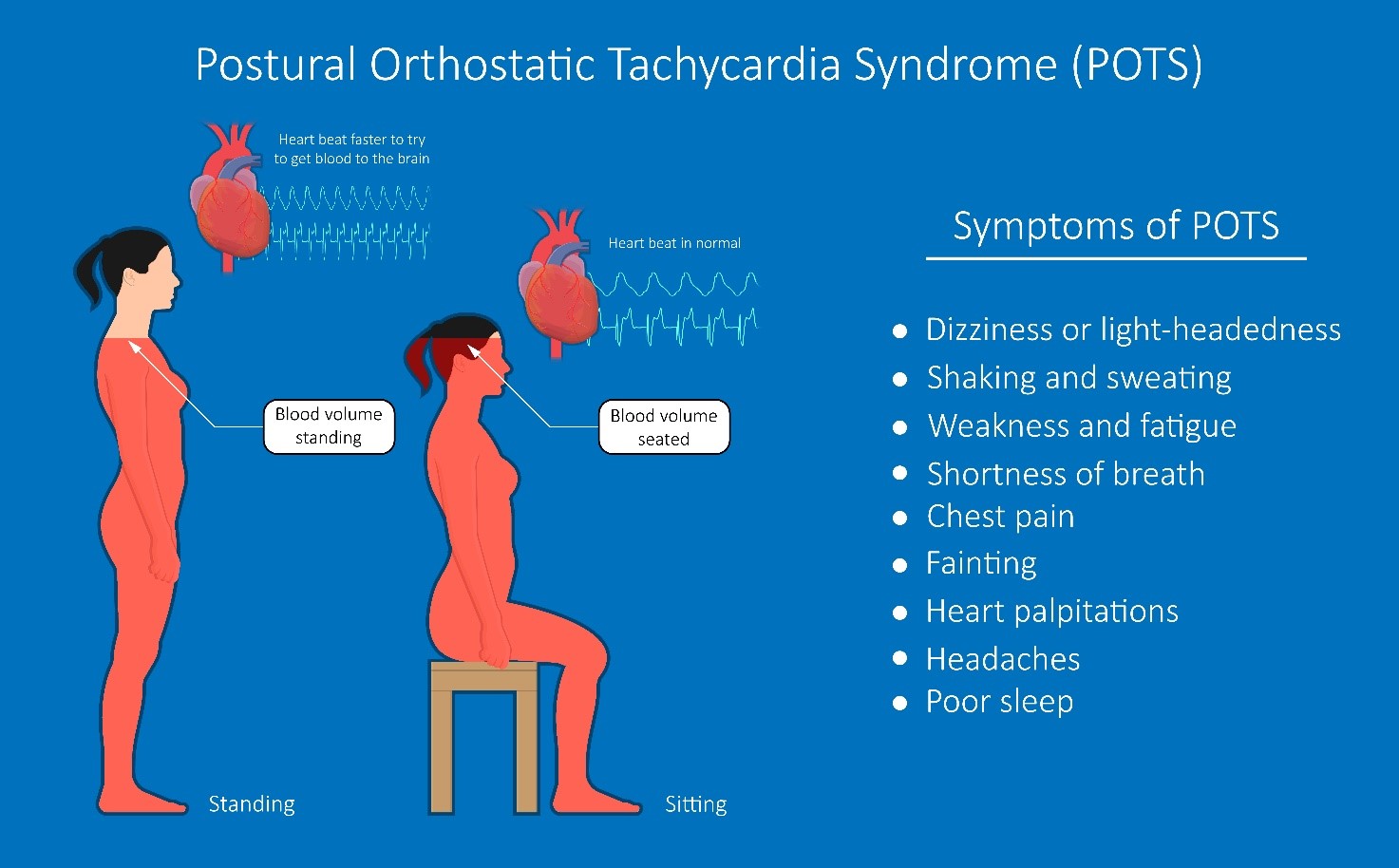Postural Orthostatic Tachycardia Syndrome (POTS)

Postural orthostatic tachycardia syndrome (POTS) is a condition that causes lightheadedness, dizziness, and fainting when you stand up from a sitting or lying position. It is a type of autonomic dysfunction, which means that the nerves that control your body’s automatic functions, such as heart rate and blood pressure, are not working properly.
POTS can be caused by a number of things, including dehydration, certain medications, and underlying medical conditions such as diabetes and autoimmune disorders. It is more common in women than in men, and it typically develops in people between the ages of 15 and 50.
Symptoms
- Lightheadedness
- Dizziness
- Fainting
- Rapid heart rate
- Shortness of breath
- Fatigue
- Nausea
- Blurred vision
- Headache
- Chest pain
Causes
The exact cause of POTS is unknown, but it is thought to be caused by a combination of factors, including:
- Dehydration
- Certain medications
- Underlying medical conditions, such as diabetes and autoimmune disorders
- Genetics
Diagnosis
POTS is diagnosed based on your symptoms and a physical examination. Your doctor may also order tests, such as a tilt table test, to confirm the diagnosis.
A tilt table test involves lying on a table that is tilted up to a standing position. Your heart rate and blood pressure are monitored during the test. If your heart rate increases by 30 beats per minute or more and your blood pressure drops by 20 mmHg or more when you stand up, you may have POTS.
Treatment Options for POTS

Treatment for POTS aims to alleviate symptoms and improve overall quality of life. There is no one-size-fits-all approach, and the best course of treatment will vary depending on the individual patient. However, some common treatment options include:
- Lifestyle Modifications: Simple lifestyle changes, such as increasing fluid intake, avoiding triggers, and getting regular exercise, can significantly improve symptoms in some patients.
- Medications: Medications such as beta-blockers, midodrine, and fludrocortisone can help to regulate heart rate and blood pressure.
- Compression Garments: Compression garments, such as stockings or abdominal binders, can help to improve blood flow and reduce symptoms.
- Physical Therapy: Physical therapy can help to improve balance and coordination, which can be beneficial for patients with POTS.
It is important to note that there is no cure for POTS, and treatment is typically lifelong. However, with the right treatment plan, most patients with POTS can live full and active lives.
Living with POTS
Living with POTS can be challenging, as the condition can cause a range of symptoms that can affect daily life. These symptoms can include lightheadedness, dizziness, fatigue, brain fog, and heart palpitations.
There is no cure for POTS, but there are treatments that can help to manage the symptoms. These treatments may include lifestyle changes, such as increasing fluid intake and avoiding caffeine and alcohol, as well as medications, such as beta-blockers and midodrine.
Challenges of Living with POTS
- Difficulty with daily activities: POTS symptoms can make it difficult to perform everyday activities, such as going to school or work, exercising, and socializing.
- Social isolation: POTS can lead to social isolation, as people with the condition may feel too embarrassed or unwell to participate in social activities.
- Financial burden: The cost of POTS treatment can be a significant financial burden, especially for people who do not have health insurance.
Tips for Managing POTS Symptoms, Postural orthostatic tachycardia syndrome
- Increase fluid intake: Drinking plenty of fluids helps to increase blood volume and improve circulation.
- Avoid caffeine and alcohol: Caffeine and alcohol can worsen POTS symptoms.
- Get regular exercise: Exercise can help to improve circulation and strengthen the heart.
- Wear compression garments: Compression garments can help to improve blood flow and reduce symptoms.
- Take medications: Medications, such as beta-blockers and midodrine, can help to manage POTS symptoms.
Stories from People Living with POTS
There are many people living with POTS who have found ways to manage their symptoms and live full and active lives.
“I was diagnosed with POTS when I was 16 years old. At first, I was really scared and didn’t know what the future held. But I’ve learned to manage my symptoms and I’m now living a full and active life.” – Sarah, age 25
If you are living with POTS, know that you are not alone. There are many people who understand what you are going through and there is help available. With the right treatment, you can manage your symptoms and live a full and active life.